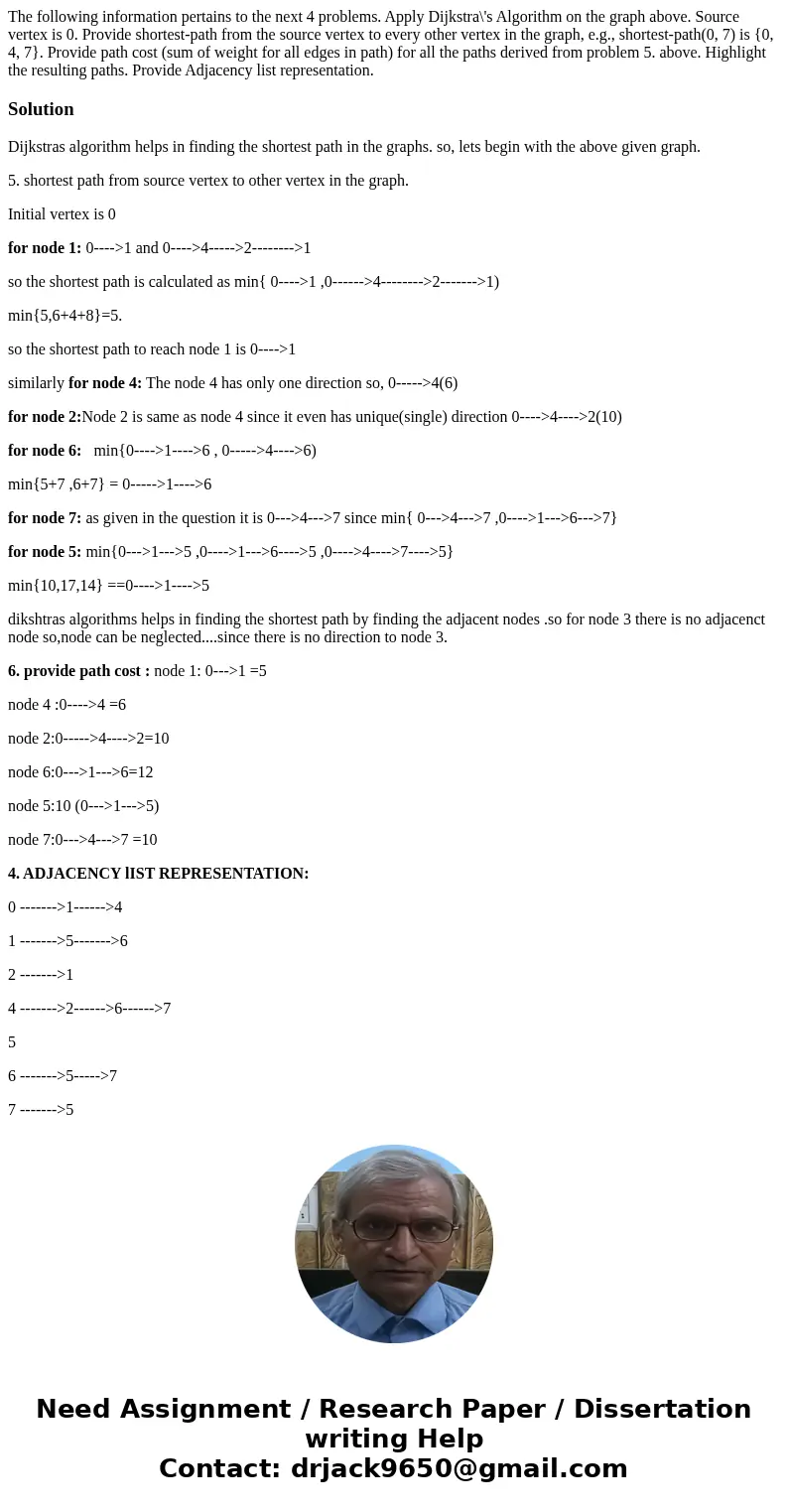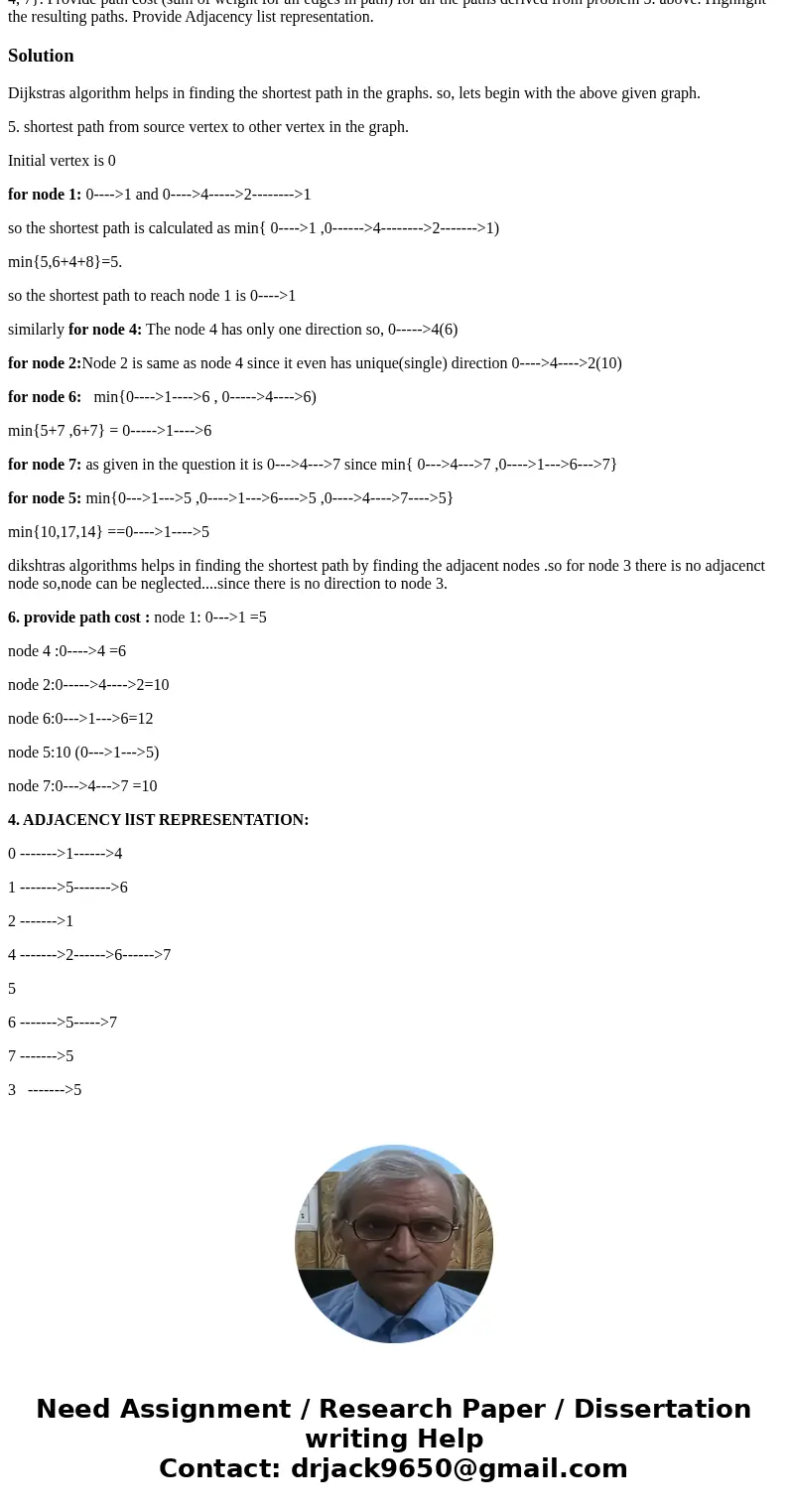The following information pertains to the next 4 problems Ap
Solution
Dijkstras algorithm helps in finding the shortest path in the graphs. so, lets begin with the above given graph.
5. shortest path from source vertex to other vertex in the graph.
Initial vertex is 0
for node 1: 0---->1 and 0---->4----->2-------->1
so the shortest path is calculated as min{ 0---->1 ,0------>4-------->2------->1)
min{5,6+4+8}=5.
so the shortest path to reach node 1 is 0---->1
similarly for node 4: The node 4 has only one direction so, 0----->4(6)
for node 2:Node 2 is same as node 4 since it even has unique(single) direction 0---->4---->2(10)
for node 6: min{0---->1---->6 , 0----->4---->6)
min{5+7 ,6+7} = 0----->1---->6
for node 7: as given in the question it is 0--->4--->7 since min{ 0--->4--->7 ,0---->1--->6--->7}
for node 5: min{0--->1--->5 ,0---->1--->6---->5 ,0---->4---->7---->5}
min{10,17,14} ==0---->1---->5
dikshtras algorithms helps in finding the shortest path by finding the adjacent nodes .so for node 3 there is no adjacenct node so,node can be neglected....since there is no direction to node 3.
6. provide path cost : node 1: 0--->1 =5
node 4 :0---->4 =6
node 2:0----->4---->2=10
node 6:0--->1--->6=12
node 5:10 (0--->1--->5)
node 7:0--->4--->7 =10
4. ADJACENCY lIST REPRESENTATION:
0 ------->1------>4
1 ------->5------->6
2 ------->1
4 ------->2------>6------>7
5
6 ------->5----->7
7 ------->5
3 ------->5


 Homework Sourse
Homework Sourse